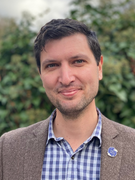Across Australia there are 60 million natural history specimens held at museums, universities, botanic gardens, herbaria, seed banks and at CSIRO. These collections are made up of whole organisms, skins, tissue samples, skeletons and DNA samples – plus data … a lot of data … even including data about that data (metadata).
Collections metadata can describe from as little as what species the sample or organism is, to when and where they were collected; to site descriptions, species associations, and much more. There is immense hidden value in metadata, and researchers are continually discovering new things about our historic collections.
In this webinar three researchers describe how they use the data ‘hidden’ in our national collections.
This webinar took place at 1.00pm AEDT, Wednesday 16 March 2022, with 154 live viewers in attendance.
Speakers

Rocío Aguilar | Monash University
Rocío is an Argentinean herpetologist who has called Australia home for the past 12 years. She specialises in eco-physiology and morphology, thermal biology and CT scanning. She completed her Bachelor and Masters at Comahue National University (Argentina) on habitat use in geckos, and research at the National University of Cuyo (Argentina) on the thermal ecophysiology of iguanids. Rocío worked for 6 years as a Research Assistant with Mike Kearney (University of Melbourne) and Christy Hipsley (University of Melbourne/Museum Victoria) working on eco-physio-morphology and conservation of Australian lizards. As part of a Monash University ARC Linkage Project with Museums Victoria and other Australian Museums, she is currently CT scanning all Australian lizard species to understand the evolutionary morphology pathways that make Australia the most lizard-diverse country in the world!

Emily Roycroft | ANU
Emily Roycroft is an evolutionary biologist and postdoctoral researcher at the Australian National University. Her research applies genomic approaches to questions about the evolutionary history of species, primarily focusing on the spectacular diversity of native Australian mammals and reptiles. Emily is especially interested in the ways that museum collections can be used as a genomic resource for understanding recent biodiversity loss in Australia.

Olly Berry | CSIRO
Olly has a background in spatial ecology and genomics, but currently leads CSIRO’s Environomics Future Science Platform. This is an R&D program whose brief is to find new ways to support environmental management with DNA technologies. It’s a field full of opportunities, and some of the most useful involve accessing information contained in natural history specimens.

Moderator bio
Martin Westgate is Science Advisor to the Atlas of Living Australia and a visiting fellow at the Fenner School of Environment & Society at the Australian National University. His research focuses on how scientific information can be used to understand and mitigate human impacts on the environment, via a combination of empirical ecology and evidence synthesis. Martin is also a scientific software developer and occasional frog-watcher.
Want more?
All ALA webinars are available to view on our YouTube channel along with other video content.